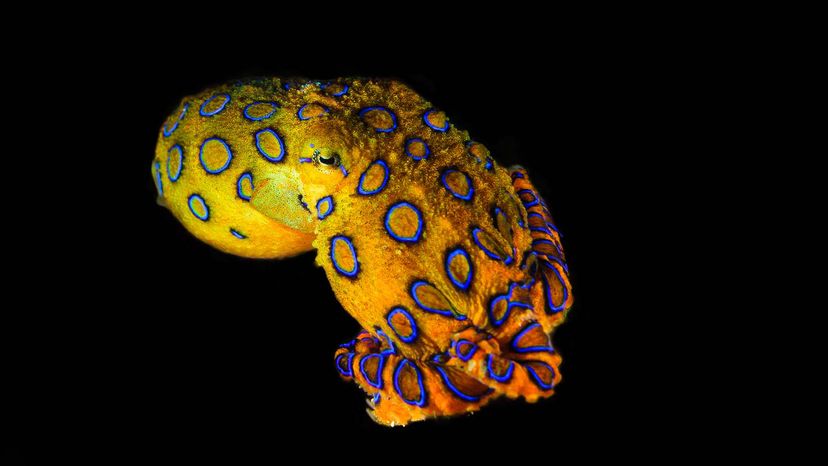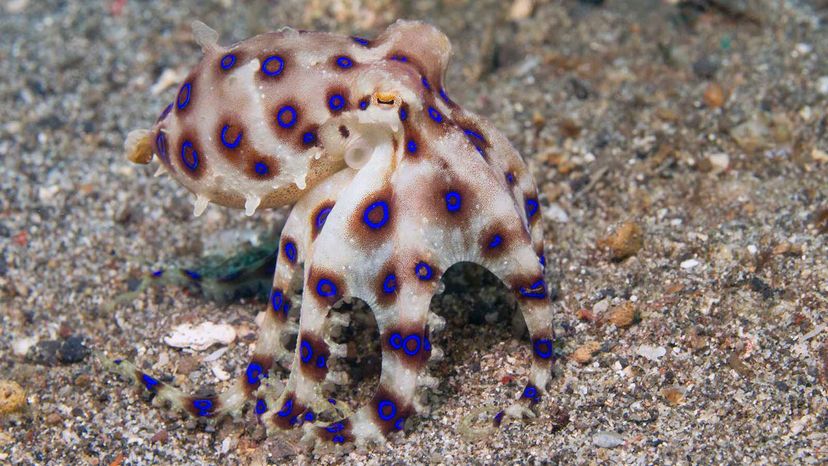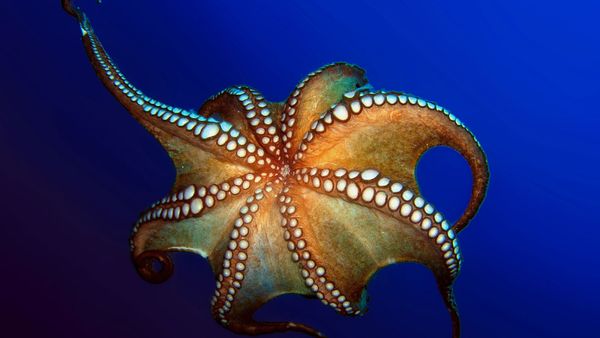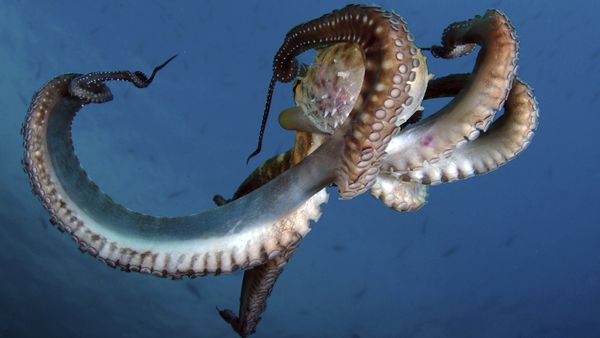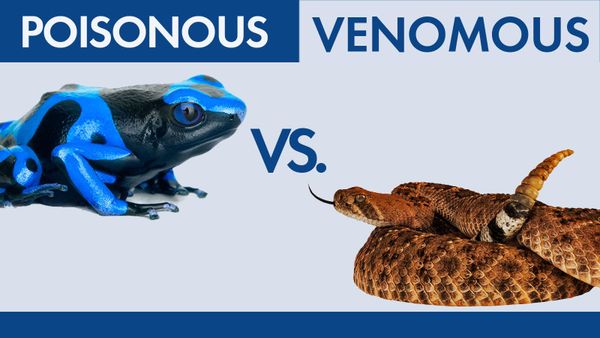Aside from its striking coloring, what the blue-ringed octopus is most famous for is its highly toxic venom. Its venom is 1,000 times more powerful than cyanide and each octopus has enough venom to kill more than 20 humans within minutes.
The deadly venom is a powerful neurotoxin called tetrodotoxin — the same venom found in pufferfish. While their bite may be very toxic, blue-ringed octopuses are generally not a danger to humans; they usually won't bite unless provoked.
So what happens if a person does get bitten? The venom lasts between 12 and 48 hours, depending on the size of the person and how much venom they get from the bite. The venom is a post-synaptic blocker, which means it blocks neurotransmitters, or nerve signals, in the body. That means the person bitten will go limp in what is known as 'flaccid paralysis.' This only affects smooth muscles, so while it doesn't affect the heart, it does hit the diaphragm, so the person will stop breathing. This happens within minutes of being bitten.
Other signs of flaccid paralysis could be nausea, blurred vision or difficultly swallowing. And the bad news is there is no antivenom available, so emergency care would be required immediately.
"Because they're nocturnal and they're very shy and they give plenty of warning as well, you really would have to be very stubborn to get bitten," Morse says. "The venom is very potent and there isn't an antivenom. But the venom does wear off, so if the [bitten] person could get life-saving techniques during that time, they could be OK."
The good news is there are only a few bites to humans every year, and there have been only three known deaths from blue-ringed octopus bites.
